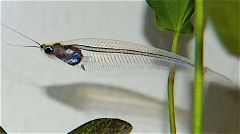Chordate
| Chordates | ||||||||
|---|---|---|---|---|---|---|---|---|
 | ||||||||
| Scientific classification | ||||||||
| ||||||||
| Typical Classes | ||||||||
|
Chordates (phylum Chordata) are a group of animals that includes all the vertebrates (subphylum Vertebrata), as well as two subphylum of invertebrates, the Urochordata (tunicates) and the Cephalochordata (lancelets).
The distinguishing features of the Chordata phylum is that they all have, at some time in their life, a notochord, a hollow dorsal nerve cord, and pharyngeal slits. A notochord is an internal, flexible rod that supports the body. Composed of cells derived from the mesoderm, the notochord may be bone or cartilage. In lower vertebrates, it persists throughout life as the main axial support of the body, while in higher vertebrates it is replaced by the vertebral column. Pharyngeal slits are vertical slits in the wall of the pharynx, which are used in primitive chordates to strain water and filter out food particles, but appear in most terrestrial vertebrates only in the embryonic stage.
Some consider pharyngeal pouches, small outpockets of the anterior gut, as a distinguishing characteristic rather than pharyngeal slits (Towle 1989).
The sharing of such features among animals of great diversity reflects the interconnectedness of these organisms. This, in turn, is evidence that more recent taxa come on the foundation of shared, earlier stages of historical development (evolutionary theory of descent with modification or theory of common descent).
Types of Chordates
Chordata is a phylum and is broken down into three subphyla: Urochordata, Cephalochordata, and Vertebrata. Members of Urochordata and Cephalochordata live only in the ocean (Towle, 1989). Urochordate larvae have a notochord and a nerve cord but these are lost in adulthood. Cephalochordates have a notochord and a nerve cord but no vertebra. In all vertebrates, except for hagfish, the dorsal hollow nerve cord has been surrounded with cartilaginous or bony vertebrae and the notochord generally reduced. Unlike vertebrates, tunicates and cephalochordates lack any kind of skull. (Those with skulls, that is the vertebrates, are placed in the taxonomic group Craniata.) The dorsal nerve cord in vertebrates develops into a spinal cord with a brain (Towle, 1989).
Over 95 percent of all chordates are vertebrates (Towle, 1989).
The chordates and two sister phyla, the hemichordates and the echinoderms, traditionally make up the deuterostomes, a superphylum. Some consider another invertebrate taxa, Xenoturbella, to also be part of the deuterostomes (Bourlat et al, 2006).
Classes of Chordates
In the subphylum Urochordata, classes Ascidiacea, Thaliacea, and Larvacea are found. Included are the sea squirts and tunicates.
In the subphylum Cephalochordata, the worm-like lancelets are found.
In the subphylum Vertebrata (all animals with vertebrae) the following classes are often recognized: Myxini (hagfish), Conodonta, Hyperoartia (lampreys), Cephalaspidomorphi, Pteraspidomorphi, Placodermi, Chondrichthyes (sharks, rays and skates), Acanthodii (spiny sharks), Actinopterygii (ray-finned fish), Sarcopterygii (lobe-finned fish), Amphibia (amphibians), Sauropsida (reptiles), Synapsida, Aves (birds), and Mammalia (mammals).
Taxonomy
The extant groups of chordates are related as shown in the phylogenetic tree below. Many of the taxa listed do not match traditional classes because several of those classes are paraphyletic. Different attempts to organize the profusion of chordate clades into a small number of groups, some with and some without paraphyletic taxa, have thrown vertebrate classification into a state of flux. Also, the relationships of some chordate groups are not very well understood.
- Phylum Chordata
- Subphylum Urochordata (Tunicates)
- Subphylum Cephalochordata (Lancelets)
- Class Myxini or Hyperotreti (hagfish)
- Subphylum Vertebrata (Vertebrates - animals with backbones)
- Class Conodonta (Conodonts)
- Class Cephalaspidomorphi (jawless fish)
- Class Pteraspidomorphi (Paleozoic jawless fish)
- Infraphylum Gnathostomata (jawed vertebrates)
- Class Placodermi (Paleozoic armored forms)
- Class Chondrichthyes (cartilaginous fish)
- Class Acanthodii (Paleozoic "spiny sharks")
- Superclass Osteichthyes (bony fishes)
- Class Actinopterygii (ray-finned fish)
- Class Sarcopterygii (lobe-finned fish)
- Superclass Tetrapoda (four-legged vertebrates)
Phylogeny
Chordata
├─Urochordata (tunicates)
├─Cephalochordata (lancelets)
└Craniata (animals with skulls)
├─Myxini or Hyperotreti (hagfish)
└Vertebrata (animals with backbones)
├─Conodonta (Conodonts)
├─Cephalaspidomorphi (Paleozoic jawless fish)
├─Hyperoartia (lampreys and kin)
├─Pteraspidomorphi (other Paleozoic jawless fish)
└Gnathostomata (jawed vertebrates)
├─Placodermi (Paleozoic armored forms)
├─Chondrichthyes (cartilaginous fish)
└Teleostomi (advanced fishes and their descendants)
├─Acanthodii (Paleozoic "spiny sharks")
└─Osteichthyes (bony fishes)
├─Actinopterygii (ray-finned fish)
└─Sarcopterygii (lobe-finned fish)
└Tetrapoda (four-legged vertebrates)
├─Lissamphibia (frogs and kin)
└Amniota (amniotic egg)
├Synapsida (mammals and kin)
└Sauropsida (reptiles and birds)
Note: Lines show probable evolutionary relationships (including extinct members of taxa)
ReferencesISBN links support NWE through referral fees
- Bourlat, S.J., Juliusdottir, T., Lowe, C.J., Freeman, R., Aronowicz, J., Kirschner, M., Lander, E.S., Thorndyke, M., Nakano, H., Kohn, A.B., Heyland, A., Moroz, L.L., Copley, R.R., and Telford, M. J. 2006. “Deuterostome phylogeny reveals monophyletic chordates and the new phylum Xenoturbellida.” Nature. 444:85-88.
- Maisey, J.G. 1986. “Heads and tails: a chordate phylogeny.” Cladistics. 2:201-256.
- Raineri, M. 2006. “Are protochordates chordates?” Biological Journal of the Linnean Society. 87:261-284.
- Towle, A. 1989. Modern Biology. Austin, TX: Holt, Rinehart, and Winston.
Credits
New World Encyclopedia writers and editors rewrote and completed the Wikipedia article in accordance with New World Encyclopedia standards. This article abides by terms of the Creative Commons CC-by-sa 3.0 License (CC-by-sa), which may be used and disseminated with proper attribution. Credit is due under the terms of this license that can reference both the New World Encyclopedia contributors and the selfless volunteer contributors of the Wikimedia Foundation. To cite this article click here for a list of acceptable citing formats.The history of earlier contributions by wikipedians is accessible to researchers here:
The history of this article since it was imported to New World Encyclopedia:
Note: Some restrictions may apply to use of individual images which are separately licensed.